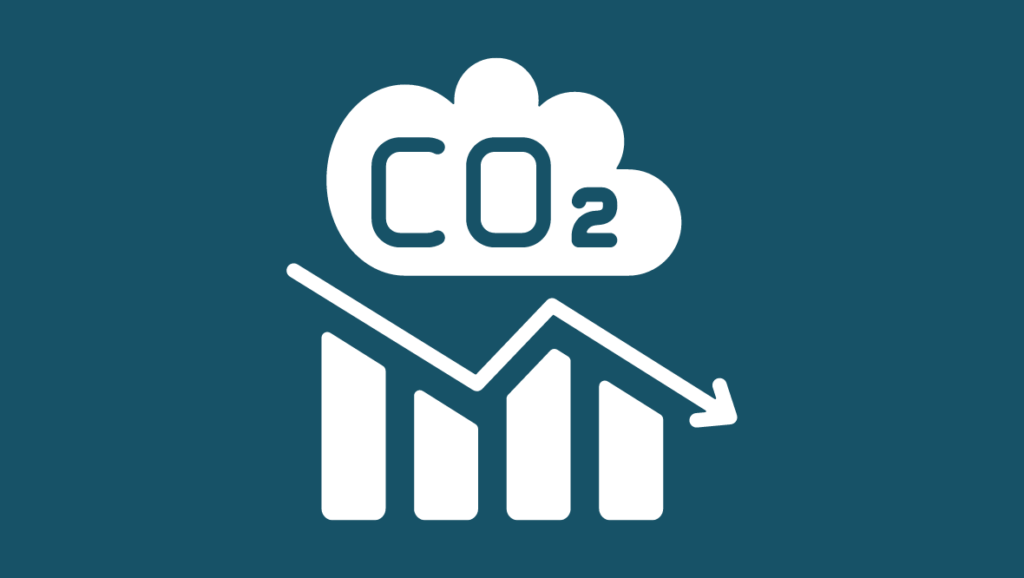Emissions Calculation: A Practical Guide for SMEs

Learn about emissions calculation with our practical guide tailored for small businesses—navigating complexities, ensuring accuracy, and fostering sustainability.
Many small to medium-sized businesses considering their first GHG emissions calculation often harbor two common misconceptions:
Misconception 1: It’s a complex, expensive, and time-consuming process requiring additional staff.
Misconception 2: Since we don’t manufacture anything, our emissions are limited to office utilities and travel.
While these concerns hold some truth, the reality of calculating emissions
- in the first case can be far less daunting,
- in the second case can uncover some surprising numbers once the emissions up and down the value chain are calculated.
This guide offers a practical roadmap to calculating your emissions, equipping you with the knowledge and resources to accurately measure your carbon footprint. We’ll walk you through the key steps involved, define essential terms, and provide user-friendly resources to make the process clear and manageable.
The Practical Steps of Emissions Calculation
The following are the key steps, in order of implementation, involved in a business’s emissions calculation:
Step #1. Setting Organizational Boundaries
Before diving into data collection, businesses need to establish their boundaries – the scope of their operations and their impact on the environment. The GHG Protocol offers two main approaches:
- Equity Share Approach: Companies calculate emissions based on their ownership stake in activities across their entire value chain. For example, if they own 50% of a manufacturing facility, they’d account for 50% of its emissions.
- Control Approach: Emissions are calculated based on control over activities. This has two options:
- Operational Control: Emissions from activities the company directly controls, like its offices and vehicles.
- Financial Control: Emissions from activities the company has financial control over, even without direct operation (e.g., joint ventures).
Choosing the appropriate approach is crucial for accurate and consistent emissions reporting. Once decided, all calculations will be made within these defined boundaries.
This step lays the groundwork for a clear understanding of which activities and emissions fall within the company’s scope, ensuring a transparent and accurate assessment of their environmental impact.

Step #2. Setting Operational Boundaries
After defining your organizational boundaries, you need to decide which aspects of your operations contribute to your carbon footprint. Emissions are typically categorized into two main groups:
- Direct Emissions: These are emissions that come from sources directly owned or controlled by your company. This includes on-site activities like fuel combustion for heating, electricity generation in company-owned facilities, and company vehicles.
- Indirect Emissions: These emissions occur as a result of your company’s activities, but they come from sources you don’t directly control. Examples include emissions from purchased electricity, transportation of goods and materials to and from your facilities, and the production of materials you use in your business.
Carbon footprint calculations are also a sensible form of risk management for any future legislation changes, supply chain disruption and hikes in the price of carbon. Even without the price of carbon changing, calculating your carbon footprint, and reducing it, can lead to cost savings for your business.
FSB (Federation of Small Businesses)
Emissions are further classified into three scopes for calculation purposes:
- Scope 1: This includes all direct emissions from your activities.
- Scope 2: This covers indirect emissions from purchased electricity.
- Scope 3: This encompasses all other indirect emissions not accounted for in scopes 1 and 2, often the most complex and wide-ranging category.
While companies have some flexibility in choosing which scopes to report, common practice and many reporting standards require reporting at least Scopes 1 and 2.
Understanding this distinction and the different scopes is crucial for accurately measuring and communicating your emissions footprint.

Step #3. Data Collection
The next step involves gathering data from emission sources. This can be done in two ways:
- Direct Monitoring: This involves installing equipment to directly measure emissions from your sources, but this can be expensive and complex for most businesses.
- Emission Factors: This is the more common approach and involves collecting data on your fuel and energy use (e.g., utility bills, fuel receipts, travel distances) and then applying emission factors. These factors are essentially conversion numbers that translate your activity data (e.g., liters of fuel used) into emissions (e.g., kilograms of CO2).
Emission factors are readily available from various sources, making this approach more accessible and cost-effective for SMEs and businesses just starting out with emissions calculation.

Step #4. Calculating Emissions
With data in hand, it’s time to calculate your emissions. In the case of using the emissions factors approach it involves applying the relevant emission factors to your activity data. For example, if you collected your monthly electricity usage in kilowatt-hours (kWh) and found an emission factor of 0.5 kg CO2 per kWh, you would multiply these values to get the total CO2 emissions from your electricity consumption.
Remember, this is just one example. Depending on your chosen scopes and identified sources, you’ll need to repeat this calculation for all relevant activities. This involves using different emission factors and performing various calculations.
To help standardize and assist you in this process there are many frameworks and tools available specifically designed to simplify emissions calculations for businesses. These tools can streamline the process, reduce the risk of errors, and provide a clear picture of your overall emissions footprint.

Step #5. Monitoring Progress: Base Years and Tracking Emissions
The ultimate goal of emissions calculation is a reduction over time. To track and demonstrate progress in this journey, companies establish a base year: typically the first year they calculate their emissions. This chosen year becomes the benchmark against which future emissions are compared.
Having a base year helps you:
- Monitor your progress: You can track your emissions year by year, measuring reduction efforts and celebrating achievements.
- Set realistic goals: By analyzing your base year emissions, you can set realistic and achievable reduction targets for future years.
- Demonstrate transparency: Consistent base year reporting allows stakeholders to see your commitment to sustainability and track your progress towards a greener future.
The base year usually remains constant unless there are significant changes like mergers or acquisitions. This ensures consistent data comparison and accurate tracking of your environmental impact over time.

Standards and Guidance for Effective Calculation
When calculating and reporting your emissions, it’s helpful to follow established standards and guidelines. These frameworks ensure:
- Credibility: Using recognized standards adds credibility and trust to your reported emissions data.
- Comparability: Calculating your emissions based on consistent standards allows comparisons across similar companies and industries.
Here are some of the leading standards and resources to consider:
- GHG Protocol Standards: These are the most widely used and comprehensive standards for emissions calculation and reporting. They offer various tools and guidance specific to different scopes and are accepted globally.
- ISO 14064-1: This standard establishes the principles and requirements for quantifying and reporting greenhouse gas emissions for organizations. It provides a framework for designing, developing, managing, and verifying your emissions inventory.
- Greenhouse Gas Accounting and Reporting for the Private Equity Sector: This standard is specifically designed for private equity firms to disclose climate-related data and emissions reductions across their portfolio companies.
- Hot Climate, Cool Commerce: This guide is a helpful resource for service sector companies, offering step-by-step guidance and practical examples for calculating and managing their emissions inventory.
Exploring and following the guidance provided in these and other relevant standards will equip you with the knowledge and tools to calculate and communicate your emissions clearly, credibly, and effectively.

Streamlining the Process: Time-Saving and Cost-Effective Strategies
While we discussed some initial concerns about emissions calculation, the reality isn’t as daunting as it may seem. Here’s how companies can approach the process in a practical way:
Starting Small, Scaling Up:
- Many businesses start with just Scopes 1 and 2, or specific categories within Scope 3. This allows them to familiarize themselves with the process and gradually expand their calculations in future years. This saves time and resources while still providing valuable insights into their environmental impact.
Outsourcing Expertise:
- You don’t have to go it alone! Consider partnering with sustainability agencies to handle your emissions calculations and reporting. This option ensures accuracy and efficiency, allowing you to focus on your core business and save valuable time and resources.
Finding the Right Partner:
- When outsourcing, look for agencies that understand your industry and use confidentiality agreements (NDAs) to protect your sensitive data. This ensures a secure and collaborative partnership that empowers you to achieve your sustainability goals.


